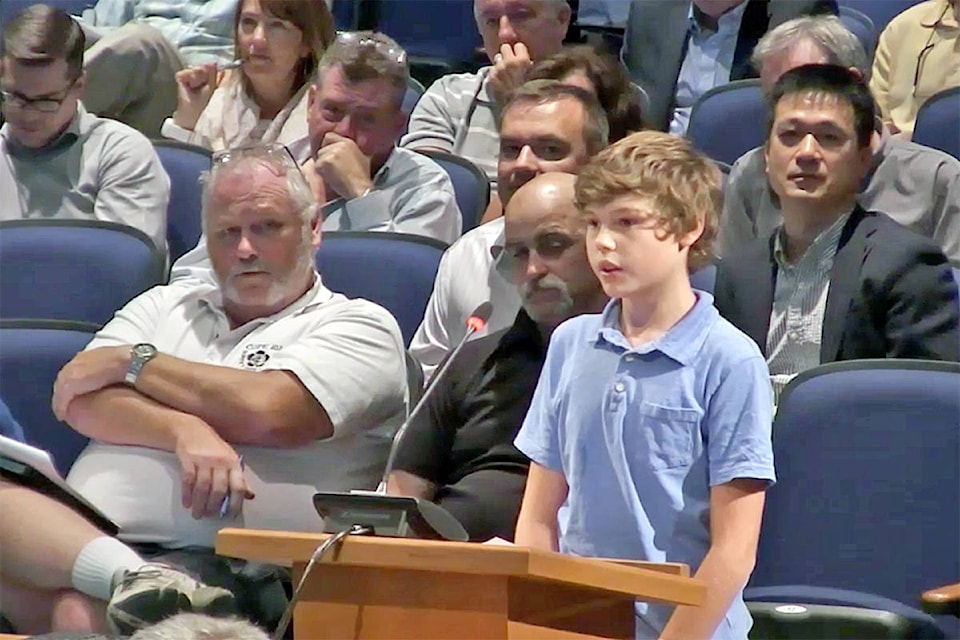A plan to build 145 single-family homes to “complete the community at Hazelmere” received third reading at Surrey council Monday.
Following a public hearing, council voted 6-2 – with Couns. Judy Villeneuve and Vera LeFranc opposed, and Coun. Barbara Steele absent – on both an Official Community Plan amendment bylaw and a zoning amendment bylaw that would facilitate the development.
In opposing the subdivision project, LeFranc said it “doesn’t really make sense to me.” She cited the area’s car-reliability as among factors; as well, that it is outside of Metro Vancouver’s Urban Containment Boundary
“It really does feel like it’s a bit of creep in terms of spreading our suburb,” she said.
The development, eyed for 129 acres across the street from the U.S. boundary, on three lots at 18115, 18147 and 18253 0 Avenue, is proposed by Lapierre Holdings and Hazelmere Golf & Tennis Club; the majority of the property is owned by Hazelmere.
The proponents have described the project as key to the golf course’s continued viability; a “strategic move” by Hazelmere to counter a declining trend in the golf industry.
If approved, it would also include a return of 10.7 acres of golf-course land to the ALR; three acres of park; and protection of 7.8 acres of natural area, said Maggie Koka, agent for the developer.
Opponents have expressed concern with the infrastructure required – which Koka said the developer is “100 per cent” responsible for – as well as with impacts on the area’s aquifers, schools, traffic volumes and the Little Campbell.
Those who spoke in favour of the development described a “first-class” project, a need to support business and the importance of supporting the golf course’s longtime practice of giving back to the community.
Semiahmoo First Nation Chief Harley Chappell, speaking to the proponents’ efforts to involve the SFN in the process, described it as “a new way of doing business within our communities, within our traditional territories, within our home.”
“When we come together, when we reconcile with private owners, that only sets the bar and shows a way of doing business within First Nation communities and First Nation traditional territories that will move definitely this area and definitely move my community into a new generation,” Chappell said.
The project also has the conditional support of the Little Campbell Watershed Society, president James Cooke told council.
“One concern we do have is often the best intentions are put forward… then later on they get watered down,” Cooke said.
He said the society has asked the applicant that “if it flips, we request that it not get diluted in any way.”
Opponents who spoke included farmer Gabriel Jefferies, who described it as “a huge departure” from previous planning and “pretty invasive for our rural community”; and Charlie Povey, a young student who appealed to council to “maybe consider protecting some farmland.”
In supporting moving the application forward – it next goes to Metro Vancouver and the Agricultural Land Commission – Coun. Bruce Hayne said he shares concerns about development spreading east, but that he was pleased to hear that a trunk sewer line proposed by the proponents would be built only to the capacity of the development itself.
Coun. Dave Woods described it as a “tough one.”
At the same time, “I think it makes environmentally sense,” he said.
Villeneuve, who also opposed earlier versions of the plan, said she felt that there hadn’t been enough planning in the area to warrant supporting the project. She cited the lack of a Local Area Plan, and that it would set a precedent for development in the area that council would be hard-pressed to ignore moving forward.
“Once the precedent is set, it becomes more and more difficult for city councillors to say no,” she said.
